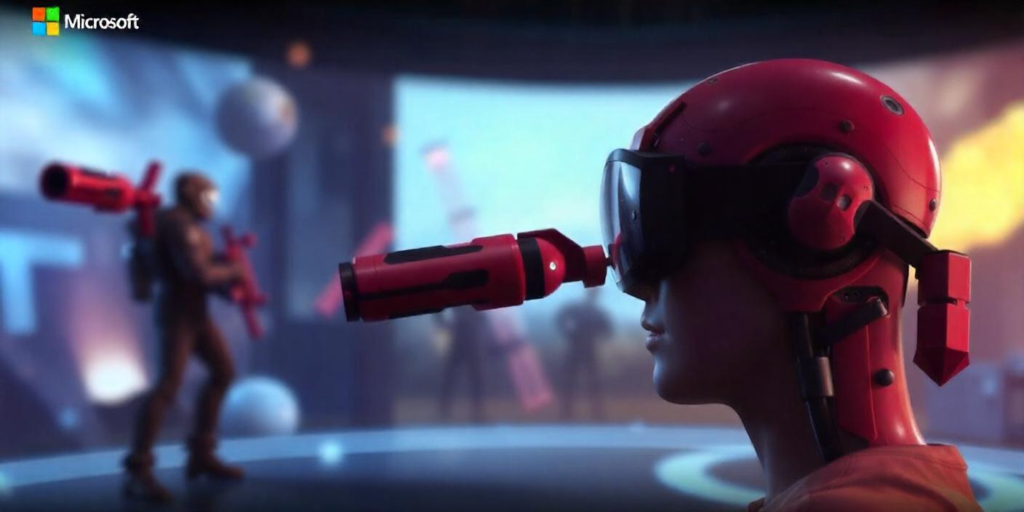Share This Article
Introduction
Historically technology combined with the pioneer to lead the advancement in the gaming industry and to furnish the latest innovations in games for better experiences. The latest from Microsoft is this kind of Artificial Intelligence (AI) model that promises up to high graphics, non-playable intelligent characters (NPCs), adaptive gameplay, and transparency for real-time rendering. This article can bring a slipstream of vocabularies on the eye in revealing how the latest advanced AI technology from Microsoft can be seen reshaping video games in the first-rate perspective of features, benefits, and future impact on the industry.
Microsoft AI for Games
Many billions of dollars have gone into the endless expansion of technology into the domain of artificial intelligence by this company. This is sheer from machine learning to natural language processing and neural networks, producing far greater engagement in the gaming experience. This same AI is tied into services named Azure AI, allowing any developer to access megawatt computation and beyond propelled algorithms to act at any issue wanting improvements on game mechanics or environments generation and character behavior.
Major Features of Microsoft’s AI Model
- Procedural Content Generation: Real, dynamic, and limitless game worlds with astonishing little details usually created after work by human manual labor – procedural content generation could make such worlds a reality.
- Human-like NPC Behavior: AI NPCs are smarter. Their behavior is learned through their player’s behavior and is processed in a manner more human.
- Adaptive Gameplay Changes: By intervening, AI changes levels of difficulty in real time as a person’s skill grows or declines.
- Enhanced Graphics and Animation: Increased resolution, also powered through rendering and upscaling, will deliver superb quality for gaming.
- Voice and Speech Recognition: AI even further integrates advanced voice recognition, capable of supporting human interaction in natural flow by converting speech into text.

How Microsoft AI is Changing Gaming
1. More Intelligent and Realistic NPCs
No more boringly stereotyped behavior of those boring old NPCs. Rather with Microsoft’s AI model, non-playable characters could now memorize and learn past experience with player and their behaviors and respond dynamically to the player through deep learning techniques, making the gaming experience all like more real and interesting.
2. Unique Game Environments with Procedural Generation
Resource- and time-hog worlds within games often have event-poor game worlds in real time due to their needing so much up-front design work. However, Microsoft’s AI model automates production environment generation so that all the effort involved becomes less than in-game sample creation but still ensures that no two play sessions will ever be the same. Monolithic environments will now be created in exactly the same way, but without every single object in it crafted manually by developers.
3. Personalized Game Experiences
Adaptive AIs change the difficulty of a game, the strategies that opponents employ, and the tasks associated with missions, to suit a player’s performance at any given moment. A perfect balance is struck with regard to enjoyment versus challenge, keeping them wanting to stay engaged even longer.
4. AI Improvements in Graphics
New infrastructure, such as deep learning super sampling (DLSS) and AI upscaling, combined with all AI techniques in rendering, are the bases that Microsoft works on introducing to better enhance the visual fidelity of video games. All textures, light, and shadow are processed using AI to bring them into real-time effects in order to immerse the game even further.
5. AI-enhanced Game Development with Coding Assistance
Microsoft’s AI model assists in creating codes for automated bug detection, optimization of code structure, and real-time suggestions on improvements that reduce the time spent on developing games due to improved efficiency of such arduous tasks programmed into the overall better performance of the game.
AI Contribution to Cloud Gaming
Microsoft’s AI would form another great stretch over which cloud gaming would definitely straddle. Xbox Cloud Gaming, formerly Project xCloud, includes AI features that:
- Help reduce network latency for better performing gameplay
- Predict actions and pre-cache gaming assets
- Automatically tune video quality
Only the cloud powered AI would be making high-end gaming accessible to players, freeing them from the ball and chain hardware.
AI in Video Games Testing and Quality Assurance
Game testing has traditionally been viewed as a labor-intensive process involving identification and fixing of bugs via manual playtesting. Microsoft is automating quality assurance in games through AI:
- Automatic bug detection and elimination by a testing script
- Simulation of real player activity to catch potential exploits
- Prediction and prevention by machine-learning algorithms regarding game crashes
This is prophetic of a more polished and stable release of games into the market.
Ethical Challenges Possessed by AI-Powered Gaming
Gaming convened much of all the goodies that AI comes with, but a good number of ethical issues would definitely need some kind of redress, including:
- Data Privacy: AI models need to collect data on a large scale; if invasive enough, player s’ privacy at risk.
- Equity and Bias: AI technology must ensure that a level playing field is maintained for all who are participating in games while ensuring there is no inadvertent bias in NPC behavior and game mechanics as a whole.
- Addiction and Mental Health: Being obviously addictive, adaptive AI would require a lot of care in balancing the game so that it does not result in excessive indulgence.
Microsoft has been preparing working guidelines regarding responsible AI use in gaming.



